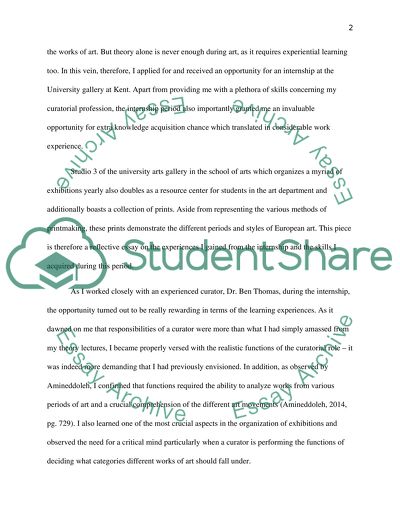Cite this document
(“Reflective essay on curatorial experience Example | Topics and Well Written Essays - 3750 words”, n.d.)
Reflective essay on curatorial experience Example | Topics and Well Written Essays - 3750 words. Retrieved from https://studentshare.org/visual-arts-film-studies/1655550-reflective-essay-on-curatorial-experience
Reflective essay on curatorial experience Example | Topics and Well Written Essays - 3750 words. Retrieved from https://studentshare.org/visual-arts-film-studies/1655550-reflective-essay-on-curatorial-experience
(Reflective Essay on Curatorial Experience Example | Topics and Well Written Essays - 3750 Words)
Reflective Essay on Curatorial Experience Example | Topics and Well Written Essays - 3750 Words. https://studentshare.org/visual-arts-film-studies/1655550-reflective-essay-on-curatorial-experience.
Reflective Essay on Curatorial Experience Example | Topics and Well Written Essays - 3750 Words. https://studentshare.org/visual-arts-film-studies/1655550-reflective-essay-on-curatorial-experience.
“Reflective Essay on Curatorial Experience Example | Topics and Well Written Essays - 3750 Words”, n.d. https://studentshare.org/visual-arts-film-studies/1655550-reflective-essay-on-curatorial-experience.


